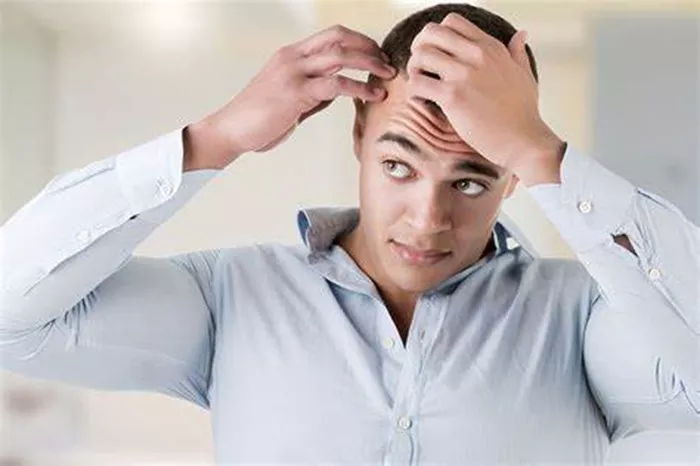Baldness is a common concern that affects millions of people worldwide, regardless of age or gender. The causes of hair loss can vary, including genetics, hormonal imbalances, nutritional deficiencies, stress, and medical conditions. Fortunately, advancements in medical science and dermatology have provided multiple treatment options to combat baldness and promote hair regrowth.
Understanding the Causes of Baldness
Before diving into treatments, it’s essential to understand why baldness occurs. The most common form of hair loss is androgenetic alopecia, also known as male or female pattern baldness. This condition is primarily genetic and linked to dihydrotestosterone (DHT), a hormone that shrinks hair follicles over time, leading to thinner hair and eventual loss.
Other causes include:
- Telogen effluvium – Temporary hair shedding due to stress, illness, or hormonal changes.
- Alopecia areata – An autoimmune disorder where the immune system attacks hair follicles.
- Nutritional deficiencies – Lack of iron, zinc, vitamin D, or protein can weaken hair.
- Medical conditions – Thyroid disorders, scalp infections, and chronic illnesses contribute to hair loss.
- Medications and treatments – Chemotherapy, blood thinners, and antidepressants may cause temporary or permanent hair loss.
Identifying the root cause is crucial in selecting the best treatment.
4 Medical Treatments for Baldness
When it comes to treating baldness, medical interventions have shown significant success. Below are some of the most effective options backed by scientific research.
1. Minoxidil (Rogaine)
Minoxidil is an FDA-approved topical treatment for both men and women. It works by prolonging the growth phase of hair follicles and increasing blood flow to the scalp. Available as a liquid or foam, it is applied directly to the scalp twice daily.
Pros:
- Effective for androgenetic alopecia.
- Over-the-counter availability.
- Can be used by both genders.
Cons:
- Requires lifelong use to maintain results.
- May cause scalp irritation or unwanted facial hair growth in some users.
2. Finasteride (Propecia)
Finasteride is an oral medication that blocks DHT production, slowing hair loss and promoting regrowth in men. It is not typically prescribed for women due to potential hormonal side effects.
Pros:
- Highly effective for male pattern baldness.
- Slows hair loss and stimulates new growth in many cases.
Cons:
- Possible side effects include decreased libido and erectile dysfunction.
- Not suitable for women, especially pregnant or breastfeeding women, due to birth defect risks.
3. Low-Level Laser Therapy (LLLT)
LLLT uses red light wavelengths to stimulate hair follicles, improving hair density and thickness. Devices like laser combs, helmets, and caps are available for home use or in clinical settings.
Pros:
- Non-invasive and painless.
- No major side effects reported.
Cons:
- Results vary; some users see minimal improvement.
- Requires consistent, long-term use.
4. Platelet-Rich Plasma (PRP) Therapy
PRP involves drawing a patient’s blood, processing it to concentrate platelets, and injecting it into the scalp. Growth factors in platelets stimulate hair follicles, promoting regrowth.
Pros:
- Natural treatment using the body’s own healing mechanisms.
- Effective for early-stage hair loss.
Cons:
- Multiple sessions needed for optimal results.
- Can be expensive.
1 Surgical Hair Restoration
For those with advanced baldness, surgical options may provide a permanent solution.
Hair Transplant Surgery
Two primary techniques are used:
- Follicular Unit Transplantation (FUT) – A strip of scalp is removed, and hair follicles are transplanted to thinning areas.
- Follicular Unit Extraction (FUE) – Individual follicles are extracted and implanted, leaving minimal scarring.
Pros:
- Permanent results.
- Natural-looking hair growth.
Cons:
- Expensive and requires recovery time.
- Possible scarring or infection.
3 Natural and Alternative Treatments
For those hesitant about medical or surgical options, natural remedies may help slow hair loss and improve scalp health.
1. Essential Oils
Some essential oils, like rosemary and peppermint oil, have shown promise in stimulating hair growth when massaged into the scalp.
2. Scalp Massage
Regular scalp massages improve blood circulation, encouraging hair follicle activity.
3. Diet and Supplements
A balanced diet rich in vitamins (Biotin, Vitamin D, Iron) supports healthy hair growth. Supplements like saw palmetto may also help block DHT naturally.
Lifestyle Changes to Prevent Further Hair Loss
- Reduce stress – Chronic stress accelerates hair loss; practices like meditation and yoga can help.
- Avoid harsh hair treatments – Excessive heat styling, chemical relaxers, and tight hairstyles damage follicles.
- Quit smoking – Smoking restricts blood flow to hair follicles, worsening hair loss.
Conclusion
The best hair treatment for baldness depends on the underlying cause, severity, and individual preferences. Medical treatments like minoxidil and finasteride are highly effective, while surgical options like hair transplants offer permanent solutions. Natural remedies and lifestyle changes can complement these treatments for better results. Consulting a dermatologist or hair specialist is crucial to determine the most suitable approach for your specific condition. With the right treatment plan, restoring hair and confidence is entirely possible.
Related Topics:
- Why Is My Hair Turning Grey and Falling Out? A…
- Why Is My Hair Coming Out in Clumps?
- When Do You Start Losing Hair Postpartum?


